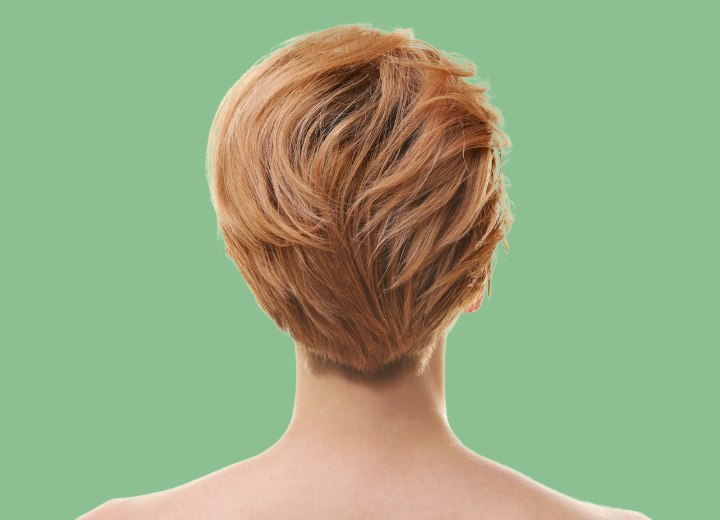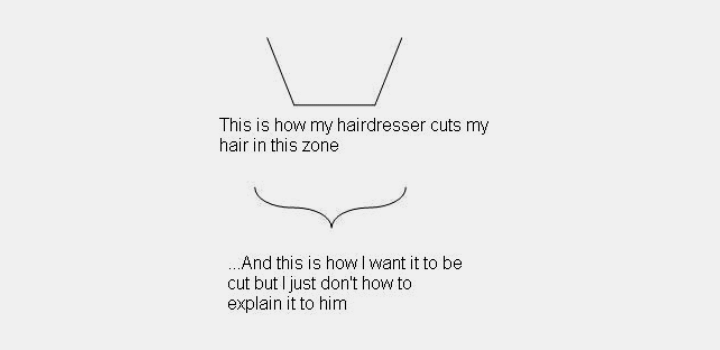Tapered Nape Area

Since I’m not a hair expert, I don’t know how to explain to him how I’d like it done. I’ve tried drawing it on paper, but it never turns out right. If there’s a specific name for this kind of haircut, I’d love to know so I can explain it to him better. I’ve included a drawing so you can better understand what I mean.
Based on your drawing, I can see that your hairdresser currently cuts your nape area with what we call a "blunt" or "straight-across" finish (the top illustration). What you're looking for is a more softly curved, tapered neckline that comes to a subtle point in the center (the bottom illustration).

When you visit your hairdresser next time, try using these specific terms and explanations:
"I'd like a softly tapered neckline instead of the blunt cut you've been doing. I want the hair at my nape to follow a natural curved shape that comes to a gentle point in the center. This is sometimes called a soft V-shape or a tapered neckline with a center point."
In American barbering and hairstyling, this is commonly referred to as a "tapered V-neckline" or a "soft-pointed neckline." It's actually a classic finishing technique that many stylists are familiar with.
You mentioned you're in Portugal, and you're absolutely right that hairstyling terminology varies significantly across countries and even regions. What might be called a "tapered V-neckline" in American salons could have a completely different name in Portuguese salons.
If language barriers are complicating things, consider using translation apps to find the Portuguese term for this technique, or simply rely on visual examples like your drawing or photos from magazines or websites.
Don't be afraid to be direct with your stylist. Most hairdressers appreciate clients who communicate clearly about what they want. If all else fails, you could even ask if you can guide their hand slightly at the end of the cut to show exactly the curve you're looking for.
Building a good relationship with your stylist takes time and patience. With clear communication and visual aids, you'll soon be getting exactly the neckline shape you desire.
©Hairfinder.com
See also:
Anatomy of the head
Do you think buzzed nape hairstyles will ever be in fashion again?
Is it appropriate to use clippers to tidy up the stray hairs on the nape of the neck?
What exactly is a nape whorl and what can be done about it?